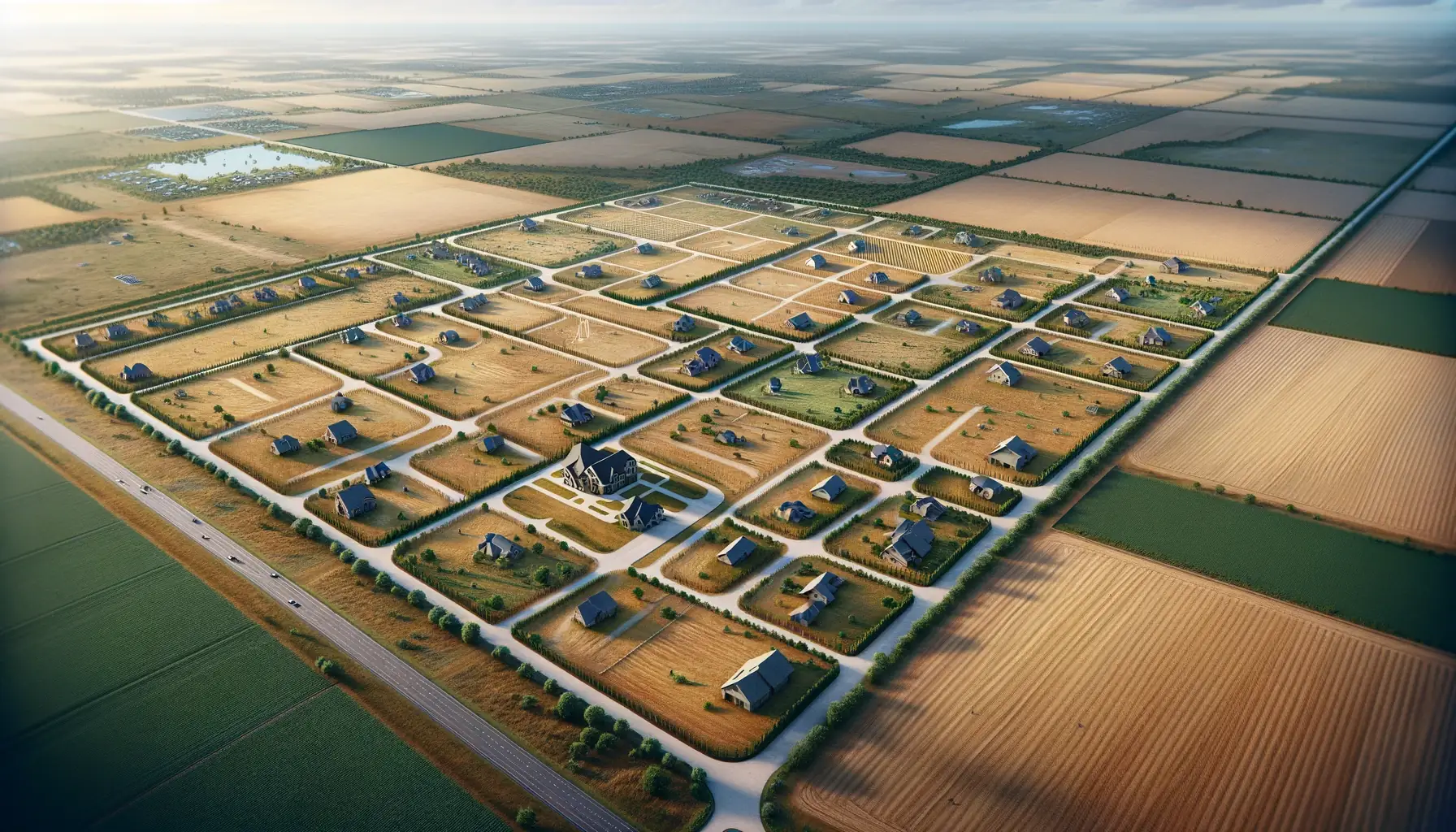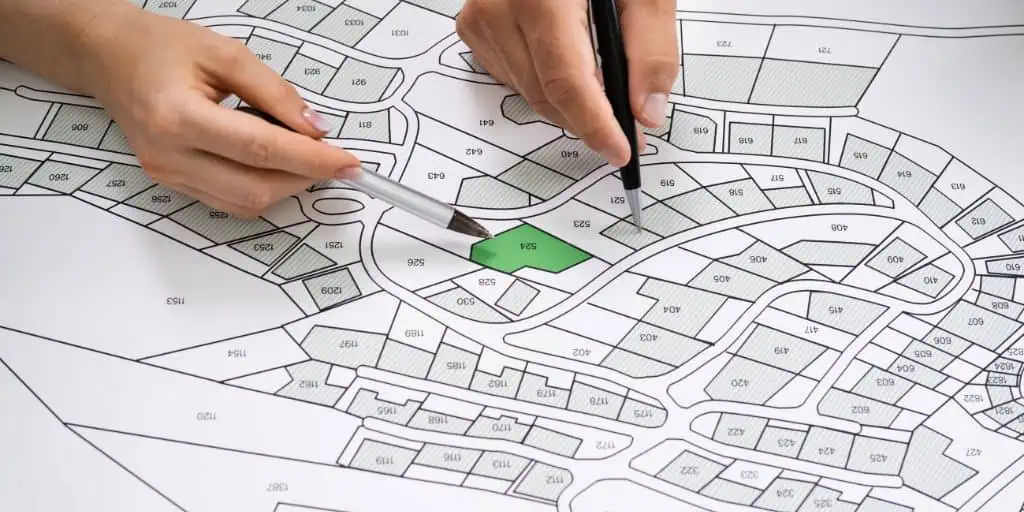What Are Major and Minor Subdivisions?
REtipster does not provide legal advice. The information in this article can be impacted by many unique variables. Always consult with a qualified legal professional before taking action.
Shortcuts
- Major and minor subdivisions are two types of subdivisions that subdivide land into more parcels, with major subdivisions typically having more resulting parcels than minor subdivisions.
- Major subdivisions are bigger in scope and complexity and may require extensive infrastructure and municipal approvals, so they are subject to stricter local ordinances.
- Minor subdivisions are usually simpler and less regulated and are usually done in rural areas.
- Developers should consider both subdivision types’ legal, environmental, and social effects.
- The local regulations restricting major and minor subdivisions are highly localized, meaning that every community may have requirements that differ from others.
A Comparison of Major vs. Minor Subdivisions
Major and minor subdivisions are types of subdivisions based on their scale and the number of lots they were subdivided into[1]:
Major subdivisions typically involve the division of land into five or more lots, often accompanied by the construction of roads, utilities, and other infrastructure. These are significant projects that can lead to the creation of new residential neighborhoods, commercial areas, or industrial parks.
Minor subdivisions usually involve dividing a piece of land into a smaller number of lots, such as four or fewer, often without the extensive infrastructure development required for major subdivisions. These are common in rural areas or for the division of family land.
Note that the regulations surrounding major and minor subdivisions are highly dependent on local ordinances (state, county, or municipal level). For example, one jurisdiction may prescribe a maximum number of lots permitted that’s different from the number stated above[2], such as only three lots instead of the more common four for a minor subdivision.
Major Subdivisions
Major subdivisions (also called primary subdivisions) involve taking a large tract of undeveloped or raw land and dividing it into residential or commercial lots of sufficient size to be independently developed. This usually means individual lots of at least one-half acre for single-family homes in residential areas[3].
Because a major subdivision is larger and more complex and typically necessitates the construction of new roads, utilities, and other infrastructure, local governments have strict regulations governing these developments[4]. These include zoning laws, environmental impact assessments, and public hearings.
In addition, major subdivisions set the framework for the future development of a neighborhood. They establish the basic lot and street layout so that minor subdivisions will be further parceled out to accommodate more housing units within the same footprint.
Development Process of a Major Subdivision
The process of creating a major subdivision involves several steps:
- Planning and design: This initial stage includes land surveying, design, and planning, considering the intended use of the subdivision, whether residential, commercial, or industrial.
- Approval process: Developers must submit their plans to local authorities for approval. This process often involves public hearings, environmental impact assessments, and revisions to meet zoning and regulatory standards.
- Infrastructure development: Once approved, the construction of roads, utilities, and other essential infrastructure begins. This phase is crucial for the functionality and accessibility of the subdivision.
- Lot sales and construction: Following infrastructure development, lots are sold to builders or individuals, who then construct homes or commercial buildings.
Minor Subdivisions
A minor subdivision often involves dividing a larger lot into smaller lots or adjusting existing lot lines. Minor subdivisions can also occur on land not previously part of a major subdivision, but note that it doesn’t exclusively apply to lots within major subdivisions.
Minor subdivisions differ significantly from their major counterparts. These subdivisions typically involve dividing a parent parcel into smaller child parcels, often without extensive infrastructure development[5].
The minor subdivision review process is usually more administrative than a major subdivision. Approval authority is often granted to planning department staff rather than an elected body. Since existing streets and utilities already serve the area, only interior lot lines need adjustment and less extensive site planning is required.
In addition, by allowing more intensive use of developable land through minor subdivisions, communities can accommodate population growth within existing neighborhoods.
Development Process of a Minor Subdivision
The development process for minor subdivisions is typically more straightforward[6] than for major subdivisions:
- Planning and land division: This involves dividing the land into smaller lots. The process usually requires a survey to determine the boundaries of each new parcel.
- Local approval: While less complex than major subdivisions, minor subdivisions still require approval from local authorities. This process generally ensures the subdivision complies with local zoning and land use regulations.
- Infrastructure and development: Minor subdivisions often do not require extensive infrastructure development, except for basic necessities such as access roads and utilities.
- Finalization and sale: The subdivided lots can be sold or developed once approved. These lots are often used for residential purposes, especially in rural or semi-rural areas.
Regulatory considerations for minor subdivisions are usually less stringent than those for major subdivisions. The simplicity of minor subdivisions makes them a popular choice for individual landowners looking to divide their property for personal use, sale, or inheritance[7].
For example, a developer has purchased 10 larger single-family home lots through a major subdivision process years prior. Now that infrastructure and basic layout are established, a minor subdivision allows “re-platting” those original 10 lots into 20 smaller lots suitable for townhomes or duplexes instead of single detached houses.
Note that a minor subdivision doesn’t always require the division of previously subdivided parcels.
Considerations for Major vs. Minor Subdivisions
When subdividing land for any reason, there are some things to keep in mind.
Legal and Regulatory
Regulations governing subdivisions vary by state and locality but generally include zoning laws, environmental regulations, and land use policies. These regulations ensure that subdivisions are developed responsibly and account for environmental impact, community needs, and sustainable development.
For instance, in some states, major subdivisions might face stricter environmental impact assessments due to their size and potential impact on the local ecosystem[8]. Conversely, minor subdivisions might have more lenient requirements but still need to adhere to basic zoning and land use policies.
Environmental
The development of both major and minor subdivisions has significant environmental and social implications.
For major subdivisions, the challenges often include managing the environmental impact of large-scale land development, such as habitat disruption, increased traffic, and pollution. There’s also a social dimension, as these developments can affect local communities in terms of housing availability, property values, and community character[9].

Bear attacks are becoming more common because of human encroachment on their natural habitat.
Minor subdivisions, while less impactful on a large scale, can still influence local ecosystems and communities. In particular, developers should consider land fragmentation[10], which can affect wildlife habitats, and the change in rural community dynamics.
In both cases, sustainable development practices (e.g., incorporating green spaces, using environmentally friendly building materials, and integrating new developments into existing communities) are essential to address these issues.
Frequently Asked Questions: Major vs. Minor Subdivisions
What are the main differences between major and minor subdivisions in terms of infrastructure requirements?
Major subdivisions often require extensive infrastructure development, including roads, utilities, and public amenities. The developer is typically required to pay all associated costs for extending streets, water and sewer lines, drainage, and other public utilities to serve the new lots being created.
On the other hand, minor subdivisions typically have fewer infrastructure requirements, focusing more on dividing the land into smaller lots without significant infrastructural changes.
In a minor subdivision involving existing infrastructure, there may not be significant additional costs beyond any required adjustments or repairs to internal lines, which the applicant needs to pay for.
How do zoning laws affect the development of subdivisions?
Zoning laws play a crucial role in subdivision development by dictating the types of buildings and activities allowed in a particular area, the density of development, and other land use parameters. These laws ensure that subdivisions are developed in a manner consistent with the overall planning objectives of the community.
Can a minor subdivision become a major subdivision over time?
It’s possible for a minor subdivision to evolve into a major subdivision, especially if additional land is acquired and further subdivided, or if there’s significant development in terms of infrastructure and amenities. This transition would typically require additional approvals and adherence to more complex regulatory standards.
Sources
- What’s the Difference Between Minor and Major Subdivision? (2021, February 11.) Mason & Associates. Retrieved from https://masonandassociates.us/2021/02/whats-the-difference-between-minor-and-major-subdivision/
- Subdivision. (n.d.) Lavery, Selvaggi, Abromitis & Cohen. Retrieved from https://www.lsaclaw.com/subdivision-article
- Minimum Requirements for Lot and Building Size. (1952, April.) American Planning Association. Retrieved from https://planning-org-uploaded-media.s3.amazonaws.com/legacy_resources/pas/at60/pdf/report37.pdf
- Leitner, M., Garvin, E. (1992, July 18.) An Introduction to Subdivision Regulations. PlannersWeb. Retrieved from https://plannersweb.com/1992/07/an-introduction-to-subdivision-regulations/
- Chapter 17.12: Application, Review, And Approval. (n.d.) City of Post Falls. Retrieved from https://codelibrary.amlegal.com/codes/postfallsid/latest/postfalls_id/0-0-0-4216
- Dolinger, M. (2014, September 19.) A Summary Of The Minor Subdivision Process. Miles J. Dolinger, Attorney at Law. Retrieved from http://dolingerlaw.com/land-use/a-summary-of-the-minor-subdivision-process/
- Why You Should Consider Subdividing Your Land for Sale. (2021, May 17.) Why You Should Consider Subdividing Your Land for Sale. Auctions Work. Retrieved from https://howauctionswork.com/2021/05/17/why-you-should-consider-subdividing-your-land-for-sale/
- Stroud, H.B. (2010, March 15.) Environmental Problems Associated With Large Recreational Subdivisions. The Professional Geographer, 35: 303-313. Retrieved from https://doi.org/10.1111/j.0033-0124.1983.00303.x
- Williams, R. A. (1958.) Social effects of subdivision design : a study in micro-ecology. (T). University of British Columbia. Retrieved from https://open.library.ubc.ca/collections/ubctheses/831/items/1.0106085
- Land fragmentation. (2021, April 15.) Stats, New Zealand Government. Retrieved from https://www.stats.govt.nz/indicators/land-fragmentation








